Video of Sun 'n Fun Carnage
There were other sections on the field I didn't get to that had more airplanes flipped, including, sad to say, a couple beautiful J3 Cubs. I hope the Grand Champion hopeful I videoed yesterday wasn't one of them...but everybody loses when this many airplanes are damaged and destroyed.
Rain 'n A Lot Of Pain
A horrific thunderstorm kept feeding nasty tornadic weather right across central Florida, and at one point we had a funnel cloud which may have touched down, depending on who you talked to, and flipped airplanes around like so many child's toys.
Once it was over, tents were smashed, 2" steel flag poles were bent over like straw, and many planes were stacked like kindling. Zodiacs, Huskies, Aircams, Cubs: no type was favored over any other.
The two Dakota Cubs I flew out in from Sioux Falls were not spared. The 180hp Cub Speedy Richardson and I flew the last two days of our 6-day flight was destroyed. The Cub flown by Amy Gersch was damaged but should be able to fly home, though the cowling was dinged up pretty bad and the metal prop was gouged by the wreckage of the other Cub which flipped, ripping out its double tie downs like they were anchored in peanut butter, and landed on Amy's plane.
Millions of dollars of damage overall, and the show was cancelled for the rest of the day.
I hunkered down in the Sun 'n Fun Museum (big steel building) with a couple hundred other anxious showgoers, including Dan Johnson and his wife Randee.
Our sincerest regrets, condolences and wishes for solid insurance policies for all those who suffered losses today.
Cablex to Make Parts of JSF Ejector Seat
 Martin Baker Mk 16 ejector seat for JSF (all photos : Martin Baker)
Martin Baker Mk 16 ejector seat for JSF (all photos : Martin Baker)
Brunei and Ukraine Sign Defense Agreements
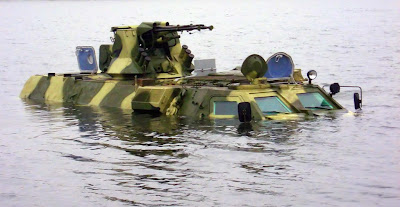
Singapore Leads Anti-Piracy Task Force for the Second Time

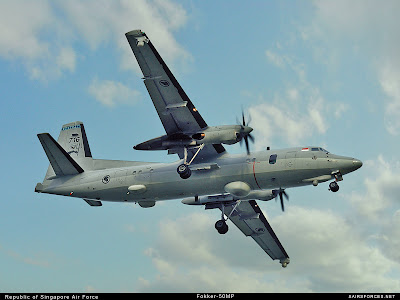
First Precision Guided Mortar Deployed
 The Accelerated Precision Mortar Initiative XM395 cartridge uses a standard M934 high-explosive 120mm projectile body. In the nose, a GPS receiver and computer controlled aerodynamic directional fins keep the round on its programmed trajectory. Folding fins in the tail provide stability. (photo : US Army)
The Accelerated Precision Mortar Initiative XM395 cartridge uses a standard M934 high-explosive 120mm projectile body. In the nose, a GPS receiver and computer controlled aerodynamic directional fins keep the round on its programmed trajectory. Folding fins in the tail provide stability. (photo : US Army)
Picatinny fields first precision-guided mortars to troops in Afghanistan
PICATINNY ARSENAL, N.J. -- This month, U.S. Soldiers in Afghanistan received 120mm GPS-guided mortar precision capability.Blue skies XX and Blue Lake.
Here we are at Blue Lake on the West Branch of the Sabine River which flows north into Lake Rotoroa in the Nelson Lakes National Park.
ZK-HXX3 is Hughes 369D c/n 30-0675D. It has been around for a while. Created on March of 1980 it worked in Oz as VH-KSY until imported into NZ for Airwest Helicopters of Reefton as ZK-HSW from 06-04-1984. Nelson Helicopters/Jet Heli Ltd took it on from 20-12-1999 and changed its registration to ZK-HXX3 on 04-02-2000. It was listed to Work Helicopters (NZ) Ltd on 10-08-2001 and then to its current operator Helicopter Charter Karamea 2006 Ltd on 12-09-2007.
| ZK-HXX NZ Civil Aircraft |
Wizz Air opens Belgrade base

Less than a year after it launched its first flights from Dortmund and London to Belgrade, Wizz Air opened its 13th European base at Belgrade Nikola Tesla Airport on Tuesday. Wizz Air will become the second largest airline operating out of Belgrade, behind Jat Airways, in April. The airline has carried some 18.000 passengers on its Belgrade flights from June 20, 2010 until March 1, 2011 and has already sold 131.000 tickets from Belgrade. Starting tomorrow, 1 of the airline’s Airbus A320s will be based at the airport.
Wizz Air operates flights from Belgrade to Dortmund, London-Luton, Rome-Fiumicino, Malmo and Charleroi (Brussels). Tomorrow, the low cost airline will inaugurate flights to Stockholm-Skavsta, on Saturday to Memmingen and on Sunday to Gothenburg and Eindhoven. The CEO of Wizz Air, Jozsef Varadi, told a press conference in the Serbian capital on Tuesday that Wizz Air will employ 290 people in Serbia. “Wizz Air has come to Serbia to become the leading airline on the market”. Jat was quick to respond with the launch of a third successive discount fare sale. The airline has been reporting strong passenger growth so far this year but whether Wizz Air’s future expansion plans out of Belgrade will hurt the national carrier remains to be seen.
Sun 'n Fun 2011 Day One

Well, Day One for me anyway; the show started yesterday but I was still stranded in Alabama by soggy and intractable weather with a couple Dakota Cubs.
 |
| Amy Gersch |
A 6-day odyssey...and we're just glad to have made it at all. Several VFR pilots are still stuck in the South and the storms continue.
Here's a video I quick-shot today, thanks to Legend Cub's Dave Graham, who took me over to meet the owner of a fabulous Piper Cub J3 restoration.
 |
| Dave "Speedy" Richardson |
It's really gorgeous. My video doesn't do it justice but it'll give you a bit of a peak. The owner is having it judged and hoping to snag a Grand Champion Award. And it's sure got a shot: absolutely immaculate.
The restoration cost upwards of $80K! Now that's commitment.
Dave and Kurt Sehnert also clued me in a new airplane about to debut from Legend, as well as a quick glance on how this top selling American-produced LSA builder has weathered the sluggish economic recovery.
"Our new Super Legend Cub," says Dave Graham, "has a flapped wing for reduced stall speeds and we're putting a lot of carbon fiber into the structure, in doors, wing tip bows and other components. The tailfeathers are Super Cub size with slightly more area, and aerodynamically balanced for more control authority."
"Power is a Lycoming 0-233. It's a 115 hp, multi fuel engine to help address the ethanol fuel situation. The Super Legend will have the same power to weight ratio as the original PA-18 Piper Super Cub with a 150hp engine, so it will be a good performer."
Legend's anticipated timetable:
[] Lycoming expects to complete certification testing by the end of Quarter 3, 2011,
[] ASTM certification for the airplane end of 2011, and ready for the market by Sebring 2012
Intro price is $139,900. 20% down will hold a slot.
It will be an SLSA first, then a kit.
 |
| Frame of the new Super Legend |
"The Texas Sport (kit) version will come after the SLSA version is done, probably by Sun 'n Fun 2012. The kit can be built either Experimental Amateur Built or as an ELSA. Of course we will offer our factory built program too as we do with our other models."
Kurt tells me the SLSA Legends continue to dominate sales, and buyers are ponying up for loaded versions with all the toys installed.
"Kit builders tend to build Experimental rather than ELSA because most want their own customized version, which you can't do with an ELSA, which has to be built to the same exact specs as the SLSA."
 |
| Super Legend frame detail |
The amphib float option Legend offers had a curve ball thrown at it when Baumann Floats recently surprised the aviation world by closing its doors.
"We'll have to see what happens," says Kurt. "We're looking at other players, but it's been a bit of a shock and it's a shame, they made an excellent product. But like all business, we'll just go to plan B."
On the Economy: "Well, we figure if we got this far, we'll make it. It has been a skinny two years. But it feels like things are moving again."
Navy Defends Plan to Buy Used Subs
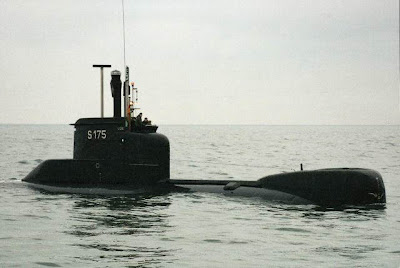
Turkey Targets Indonesia for Sale and Joint Production of Armored Vehicles, Wireless Devices and Rockets
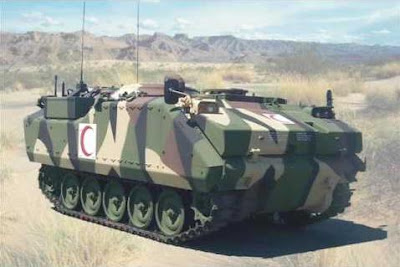 FNSS ACV armored vehicle (photo : Greenbd)
FNSS ACV armored vehicle (photo : Greenbd)
Parliament: Country's Two Submarines Cost RM50 Million Yearly To Maintain

Philippines Seeks Patrol Ships, Aircraft, Radar to Bolster Watch in and Near the Spratlys
 |
| Spratly islands (image : GlobalBalita) |
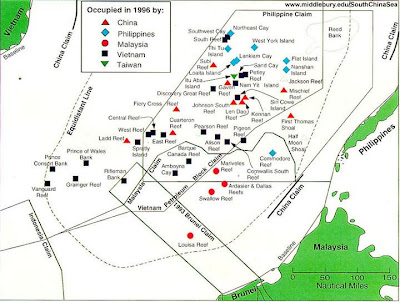 |
| Spratly Islands (image : Middleburry) |
Wizz Air from Venice to Skopje
 Low cost airline, Wizz Air, will commence 2 weekly flights from Venice to Skopje to compliment its new service from London Luton. Wizz Air is set to commence flights to the Macedonian capital on June 20 with the inauguration of the London Luton route, which will initially operate 4 times per week, decreasing to 2 from September 15.
Low cost airline, Wizz Air, will commence 2 weekly flights from Venice to Skopje to compliment its new service from London Luton. Wizz Air is set to commence flights to the Macedonian capital on June 20 with the inauguration of the London Luton route, which will initially operate 4 times per week, decreasing to 2 from September 15. The Macedonian Civil Aviation Agency has confirmed that Wizz will fly from Venice to Skopje 2 times per week, starting June 21 as flight W67751 and W67752. However, the airline is yet to officially confirm the new launch. Flights are set to operate every Tuesday and Saturday. The no frills airline will have competition from Belle Air Europe which is set to launch the same service from April 17, also twice per week. Furthermore, Mat Airways has announced that during the summer it will be operating flights from Skopje to Amsterdam, Brussels, Copenhagen, Vienna and Zurich.
Now on the register
ZK-ITR was outside the Heliflite hanger at Ardmore today, all photos Mike Condon
| ZK-ITR when it was the Koala. |
Geared TurboFans (GTF)
Why?
Because the idea of gearing the fan came up many years ago in a seminar held by some people from Rolls-Royce plc. The question arose from the floor and so the answer given, it was stressed, was not R-R official policy but more the opinion of the engineer representing Rolls-Royce.
The seminar was not on the subject of single stage fans - nor of high by-pass fans in general, but it was something that the person posing the question, on behalf of an operator, clearly thought strongly about.
The pros and cons stated were as follows:
Pros were that the current situation where the turbine and fan have to be a compromise in design, in order to maximise the power produced by the turbine and the power consumed effectively by the fan with minimum losses, could be avoided by having both the fan and the turbine rotating at their individual optimum rate. This is bound to give an increase, even if only a small one, in the overall efficiency of the engine. This leads to a decrease in overall sfc that is going to please the operator.
The cons are that the introduction of a gearbox does two things:
1. It increases the overall weight of the engine unless savings can be made elsewhere in the construction. On a twin spool (co-axial) engine, or a triple spool, the length of the LP spool must be increased to accommodate the gearbox. This increase needs a corresponding increase in the case, carcass and fairing (cowl) which will add to the overall weight and this does not yet include the weight of the gearbox itself. The alternative might be to snug up the gearbox into the nose cowl which will prevent the additional weight of the external parts but will not avoid the mass generated by the gearbox itself.
2. No matter how this is done, and, one suspects, a single stage or two stage spur epicyclic will be used, the gearbox will need to be rotated. Rotating any mass, however small, will result in power being used to do it. Is it possible that the optimisation of the turbine and fan speed will produce sufficient benefit to both to increase the efficiency to the point that the residue from driving the gearbox will still give increased performance and improved sfc?
Intriguing. We await figures from Pratt & Whitney and your opinions.
Years apart
ZK-ANQ was built at Hatfield in the UK as c/n 82906 for the RAF and was issued the serial R5011. It was shipped to NZ (as one of 90 gifted to NZ by the British) and taken on charge by the RNZAF on 23-07-1940 as NZ892. Following withdrawal from military service on 01-04-1947 it entered the NZ civil register on 21-01-1947 as ZK-ANQ with T E Lawrence of Dargaville. By November of 1959 it was Tauranga based with R L Schrivener. The above photo was taken at Tauranga on 10-06-1973. About 1983 it moved to Gisborne for Alan Land. It was hired for a pereiod to White Island Airways and in November 1987 was sold to Thompson & Burdan of Levin. It was damaged on 15-07-1990 near Palmerston North. A couple of owner changes later it was with Stuart Tantrum of Levin by March of 1996. It came out of storage and was rebuilt by Stu to join the Omaka Collection on 29-10-2002 and was re-listed to The Vintage Aviator on 01-07-2007.
Photo below shows her at Masterton on 21-01-2011 in quasi RNZAF markings.
Turkey issues new Jat offer
 |
| Belgrade Airport |
The Turkish company TAV Holdings already runs both Skopje and Ohrid airports and has shown interest in bidding for the construction of Zagreb Airport’s new terminal. Furthermore, another Turkish company, Limak Holding, partly runs Priština Airport and has expressed interest to purchase Airports of Montenegro, which manages both Podgorica and Tivat. Turkey has also shown interest in investing into Serbia’s newest airport, under construction in Kraljevo. On the other hand, Turkish Airlines owns 49% of B&H Airlines with hopes to buy out the rest of the company.
Whether the Serbian government is keen on selling one of the country’s most successful, publically owned companies (Belgrade Airport), together with Jat remains to be seen. Airports are considered a key part of a country’s infrastructure and recent moves to privatise airports in Montenegro have been met with strong opposition. The Serbian Government has announced it will create a new national airline together with a strategic partner which will take over Jat’s aircraft, operations, employees and agreements, minus the debt. However, parties which make up the governing coalition in the country are still divided on Jat’s privatisation model. The government is determined to sell part of the airline by the end of the year.
 |
| Turkish Airlines |
South Korea Developing Tank Protection
 K2 main battle tank (photo : Military Today)
K2 main battle tank (photo : Military Today)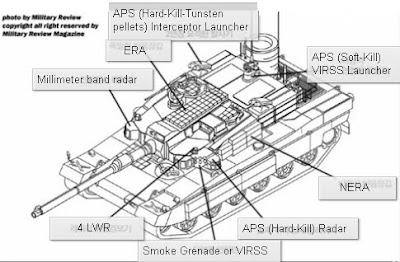 K2 active protection system (image : Military Review)
K2 active protection system (image : Military Review)
South Korea's Defense Acquisition Program Administration said the new system has been under development since 2006 with a budget of $36 million. The project is scheduled for completion this year.
 A two-shot launcher developed for the South Korean Active Protection System (APS) protecting the K-2 main battle tank. (photo : ADD)
A two-shot launcher developed for the South Korean Active Protection System (APS) protecting the K-2 main battle tank. (photo : ADD)RM700m Deal for New Firearms
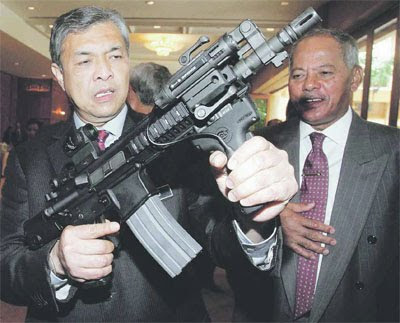
Wildlife!
Now:
"Airbus charged over Rio tragedy |
March 18, 2011 |
 JET builder Airbus has been accused of involuntary manslaughter over the deaths of 228 people in the Rio-Paris crash in 2009. JET builder Airbus has been accused of involuntary manslaughter over the deaths of 228 people in the Rio-Paris crash in 2009.Preliminary charges have been laid by a judge to start a formal investigation into the crash of the Air France flight. Airbus said there was an “absence of facts supporting the charge” and chief executive Thomas Enders said it was premature. He added it would be better to focus on finding the cause of the crash and making sure it never happened again. Investigators found automatic messages from the Airbus A330-200’s flight computers indicating an electrical fault. The pilots may have been receiving false speed readings from sensors. Air safety authorities ordered the pitot tube sensors to be replaced on other aircraft after the disaster, although the problem had been known about since 2002. Franco-German company Airbus says that only finding the black box flight data recorders will give answers to what happened when Flight 447 crashed into the Atlantic during a storm. A fourth phase of searching for the black box is due to begin this weekend, with Air France and Airbus paying the seven million euro cost. It will use a mini-submarine searching in the south Atlantic crevices, which can be as deep as 13,000ft. Just three per cent of the plane has been recovered, including a large part of the tailfin. Fifty bodies have been found." What does this have to do with wildlife? Well: |
The pitot tube problem cropped up much earlier in Birgenair Flight 301, in 1996. The reason for the faulty pitot tubes. Investigators suspected that some kind of insect could have created a nest inside the pitot tube. The prime suspect is a species called the Black and yellow mud dauber wasp, well-known by pilots flying in the Dominican Republic. The aircraft had not flown in 25 days during which time the pitot tubes were not covered, giving the wasps an opportunity to build nests in the tubes.
(NB: Final comment courtesy of Charles Thomas)



